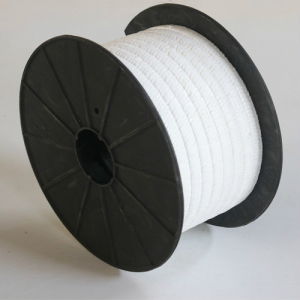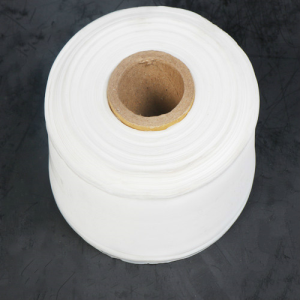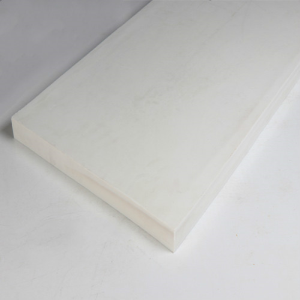"At present, China's fluorine chemical industry continues its rapid expansion and development model, and even if there is no financial crisis, it will encounter difficulties. The current global economic downturn, represented by the European debt crisis, is an excellent opportunity for China's fluorine chemical industry to adjust. Only by solving the three major problems of resource integration, technology research and development and structural adjustment can the industry change the long-term low-level situation of fluoride chemical products. "On August 10th, at the Fifth Fluorochemical Industry Development Summit Forum held in Zhangjiajie, Fluorochemicals The opinions of the expert and former chief engineer of Jinan Sanaifu Fluorine Chemical Co., Ltd. Chen Hongchang resonated with the participants.
Resource integration must be done
For a long time, over-exploitation of resources has been the primary issue affecting the healthy development of fluoride workers. To this end, in 2010 the Ministry of Industry and Information Technology has issued two industry-related access standards, with the aim of promoting resource integration. 2012 is also considered to be a year of substantial progress in the integration of fluorite resources, and more than half a year later, the integration of fluorite resources has not progressed smoothly.
The entry standard stipulates that the daily processing capacity of a single production line of a fluorite mining enterprise shall not be less than 100 tons. However, some small and medium-sized mining companies that have previously obtained mining rights have not stopped production because the licenses they have obtained have not expired. This has even been supported by some local governments.
Jiang Fulin, secretary general of the China Fluorite Special Committee, believes that the chaos in the development of fluorite ore in the first half of this year has intensified, and unlicensed illegal mining has been rampant. In early August this year, the domestic price of fluorite has dropped from 3,000 yuan / ton in the same period last year to 1,750 yuan / ton.
Jinshi Resources Group Co., Ltd. Vice President Zhao introduced that the prosperity of the fluorine chemical industry last year has made the construction of fluorine chemical bases bloom everywhere. Liaoning, Jiangxi, Hunan, Henan, Shaanxi, Fujian, Inner Mongolia, Gansu and other places have successively proposed to build fluorine chemical Base, and given very attractive investment conditions in terms of taxation and resources. In addition, last year's booming market scene attracted capital from all walks of life, forming a new round of investment boom in fluorine chemical industry. Many large enterprises or investment companies outside the industry are involved in this field, but most of the newly launched projects are primary general-purpose products with excess capacity or are about to face excess. Only by further strengthening the integration of resources can we promote the healthy development of the fluorine chemical industry.
Long-term thinking in scientific research
The long-term investment in the research and development of fluorine chemical industry is insufficient. Driven by short-term interests, scientific research lacks continuity and deepening. Chen Hongchang believes that in addition to the investment of human and financial resources, it is also necessary to be mentally prepared for a protracted war. Taking Dongyue's perfluorinated ion membrane as an example, one of the important factors for its success is that it has gone through two "eight years of key research" before and after. If you give up halfway, you will not have today's achievements.
Fluorochemical expert Jiao Zhanzhong, director of the Design Institute of Shandong Aluminum Co., introduced that China currently has an annual capacity of about 1.5 million tons of anhydrous hydrogen fluoride and an output of about 1 million tons, ranking first in the world. But in terms of single-line output, the maximum production capacity is only over 20,000 tons, while foreign single-line production capacity has reached 80,000 to 100,000 tons. At present, China is accelerating the development from two aspects of the fluorite method and the fluorosilicic acid method, and the production line of 40,000 tons of fluorite method and 20,000 tons of fluorosilicic acid method is being built.
Chen Hongchang said that some scientific research units have more technology transfer promotion than scientific research, and one achievement blossoms everywhere, causing many Chinese enterprises to have similar production technologies and similar product grades. Except for a few of the fluorine chemical enterprises, which have considerable R & D capabilities, many enterprises are only production-type factories, which is extremely detrimental to the subsequent development of the enterprise. At present, among the fluorine-containing polymer materials, we have our own technology for many products such as fluororesin and fluororubber, but most of them are only in the pilot or pilot stage, and they can only provide a small amount of products for military industry without being industrialized.
At the same time, some high-end products, such as organic fluorine efficient pesticides, new drugs and organic fluorine fine products, are still dependent on imports. The technology introduction of these high-end products is not easy to succeed because it involves issues such as intellectual property rights protection, technology blockade or high prices, and it needs to be completed through independent innovation to a greater extent. The fluorine chemical industry should form an industry-university-innovation scientific and technological innovation system with fluorine chemical enterprises as its main body as soon as possible, conduct systematic research on the gap between basic fluorine products and foreign countries, and at the same time cultivate professional personnel in the research and development of fluorine products to form its own characteristics of fluorine products.
Product development focuses on high-end
At present, new projects launched in various places are concentrated in the front end of the industrial chain, and production lines such as anhydrous hydrogen fluoride, fluoride salts and alternatives have been implemented. Some fluorine chemical fine chemical technology development still has not achieved substantial breakthroughs, and production capacity and output have basically remained at the pilot level; high-value-added varieties and high-end domestic markets are still dominated by foreign products.
Huang Fugenli, the general manager of Huangfu Chemical Technology Co., Ltd. believes that if China's fluorine chemical industry is to develop, it must strengthen its own competitiveness through integration and extend the industrial chain. The company's products must avoid homogeneous and homogeneous products. Development of refinement, compounding, and lightweighting, such as the development of high-performance fluoropolymers such as electronic chemicals, surfactants, and thin films.
Due to the increasing demand for air conditioners, refrigerators, and automobiles in the market, the market space for fluorine-containing alternatives has grown rapidly. In the field of fluoropolymers, PTFE competition will intensify, and the demand for fluororubber will increase significantly with the development of China's automobile industry. Fluoro coatings will also increase with the development of the construction and chemical industries. There is a huge market space, and the follow-up products will continue to develop with the advancement of technology; the demand for downstream energy industries such as fluorine-containing electronic chemicals (liquid crystal materials), new energy materials such as lithium batteries, fluorine-containing medicines, and pesticides Very exuberant. The development of these downstream industries also provides a broader market space for the refined development of the fluorine chemical industry in China.
It is estimated that in the next three years, the average growth rate of China's fluorine chemical industry will be 5% to 8%, and various products will vary. As the production of fluorocarbons, especially refrigerants, gradually shifts to China, the growth of hydrogen fluoride will be slightly higher, and the demand for aluminum fluoride and inorganic fluoride salts will maintain a modest increase, and a few products such as cryolite will show negative growth.




